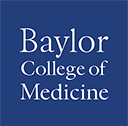Transitional Care Management
Needs Statement
Transitional Care Management (TCM) services play a crucial role in facilitating a smooth transition for patients moving from inpatient to community settings. Following a hospitalization or stay in an inpatient facility like a skilled nursing facility, patients often confront medical crises, receive new diagnoses, or undergo changes in medication therapy. The responsibility of overseeing this transitional phase frequently falls on family physicians. Managing the transitional care of our aging population demands a blend of care, precision, and effective teamwork. Ensuring a seamless handover of care back to the primary care team becomes paramount when a hospitalized patient is ready to return home. Centers for Medicare & Medicaid Services (CMS) has set a goal of having 100% of Traditional Medicare beneficiaries and the vast majority of Medicaid beneficiaries in these types of accountable care relationships by 2030.
Target Audience
Physicians and Advance Practice Providers (APPs), Medical Assistants, Nursing, Office Managers.
Learning Objectives
At the conclusion of the session, the participants should be able to:
- Define Transitional Care Management (TCM) and review its requirements.
- Describe the elements of both non-face-to-face and face-to-face contacts.
- Describe how to document a Transitional Care Management Encounter.
- Identify the process of coding for a Transitional Care Management Encounter in the Electronic Health Record.
- Apply collaborative strategies within the Clinically Integrated Network, physician, and APP team to ensure a seamless transition of care.
Available Credit
- 1.00 AMA PRA Category 1 Credit™
- 1.00 Participation

 Facebook
Facebook X
X LinkedIn
LinkedIn Forward
Forward